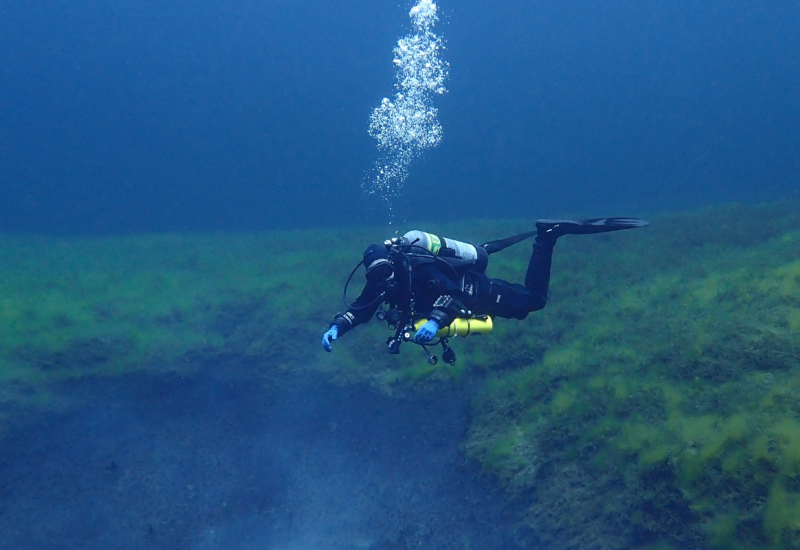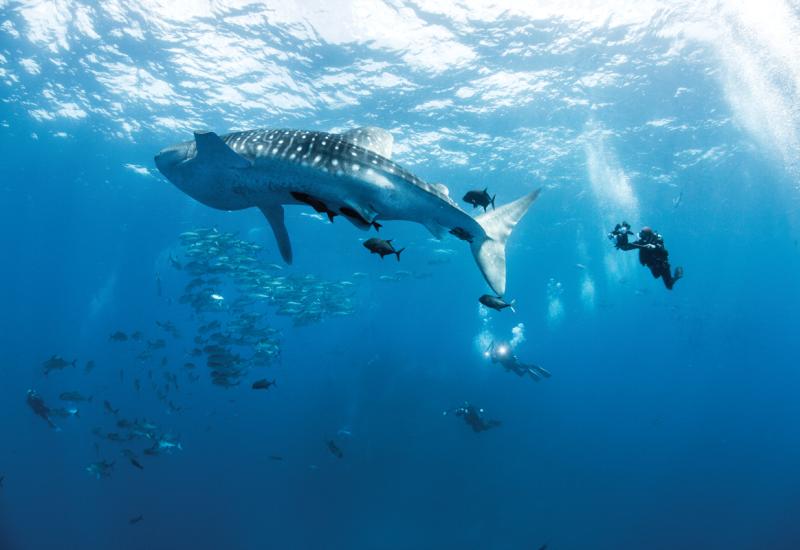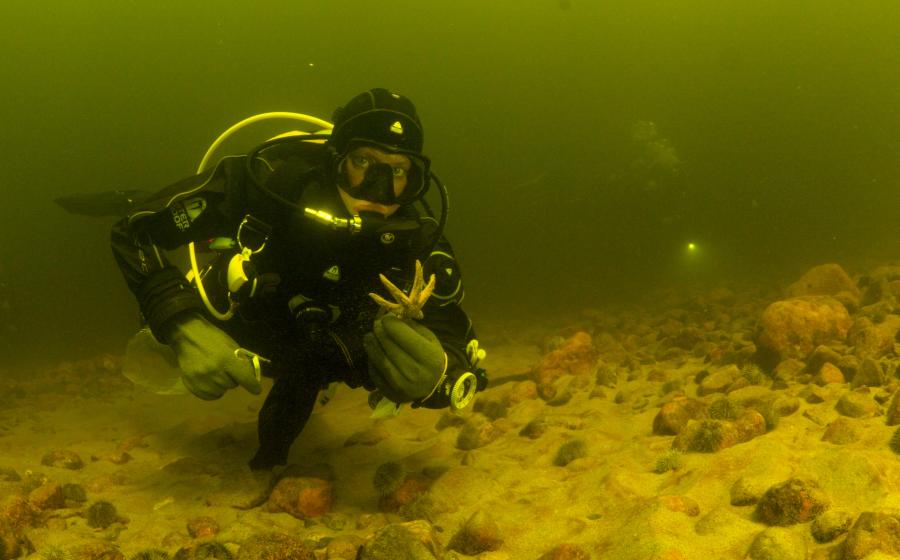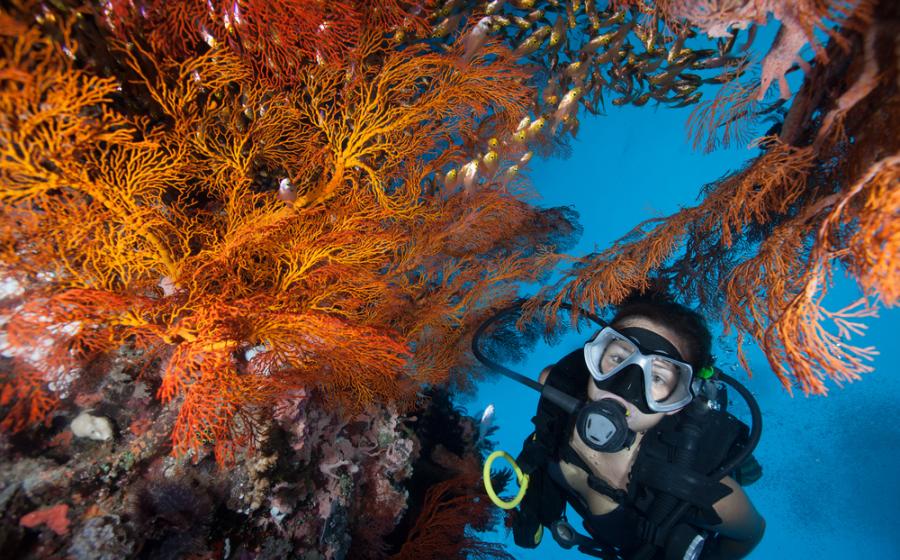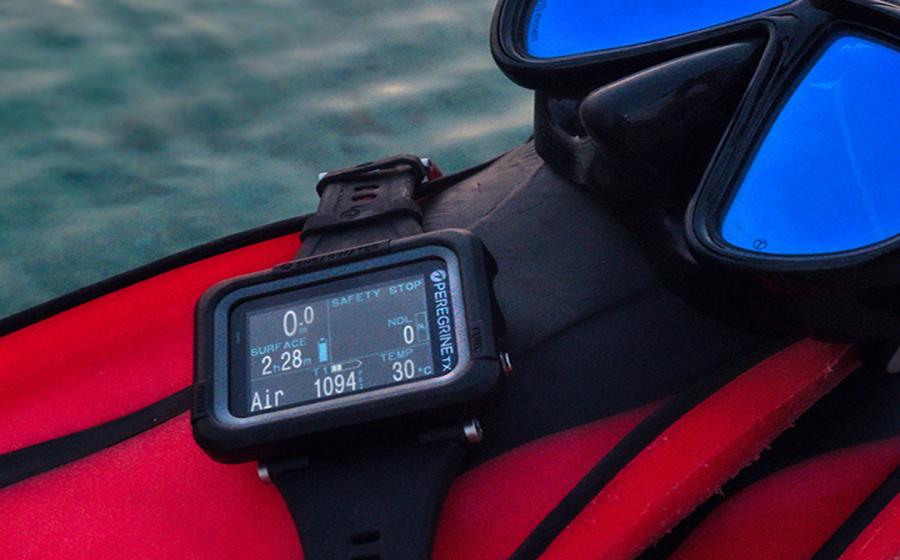Fin Kick Techniques: Tips, Tricks and Advice for Scuba Divers
Kicking is fundamental. As our primary mode of propulsion, divers wouldn’t see much without the flutter, modified flutter, frog, reverse frog, sculling, scissor or those crazy custom styles you sometimes witness just inches from your mask. How we move our scuba diving fins is something we probably don’t spend too much time focused on when in the act, as our attention is typically zeroed in on the underwater world around us. But learning and perfecting a variety of time-worn techniques — and employing the right style at the right time and place — can have a huge effect on improving your experience and the safety of everyone and everything around you.
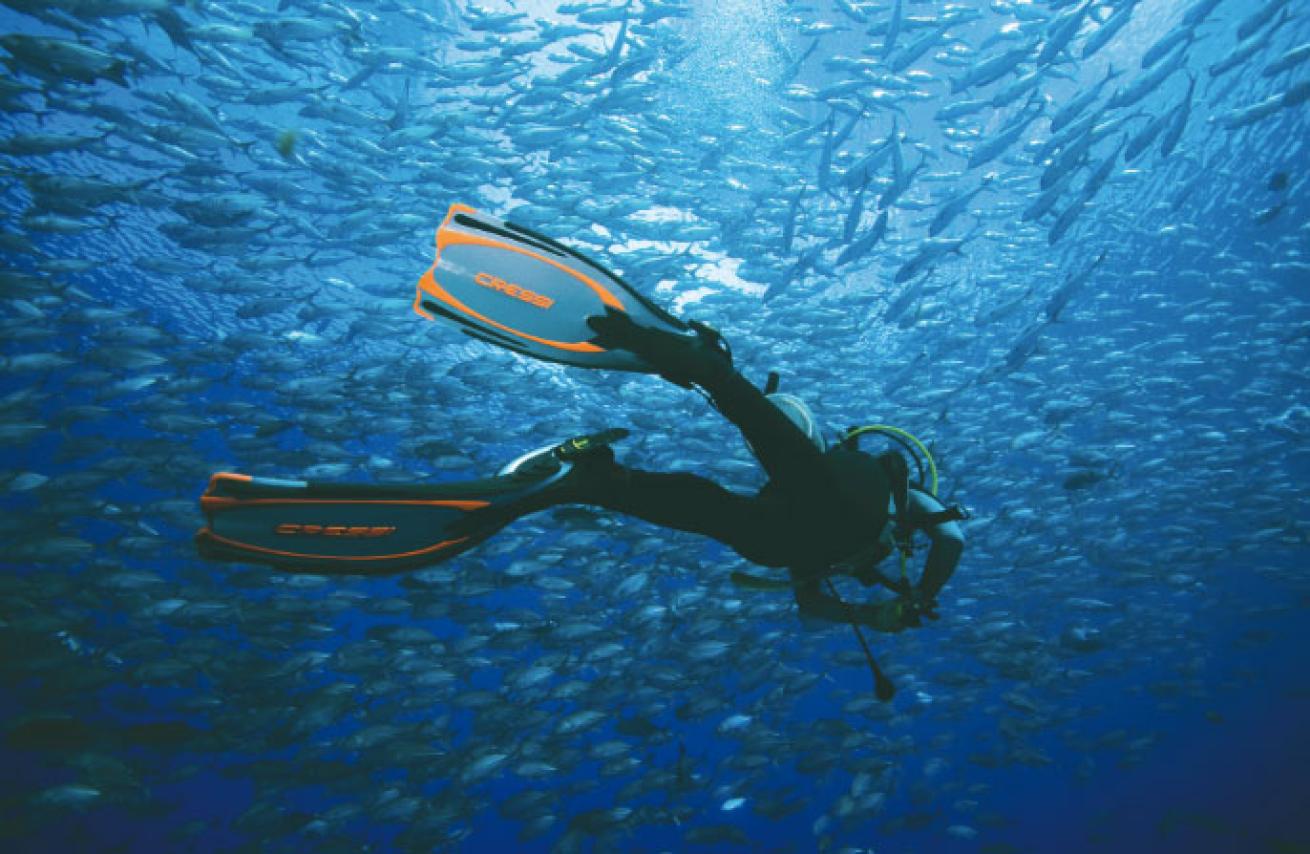
Courtesy CressiFin technique is an often overlooked but crucially important part of diving — here’s how to kick efficiently underwater.
“Good kicking technique is important to facilitate relaxed, low-effort diving,” says underwater explorer, conservationist and photographer Jill Heinerth. “Just as critical, it prevents silting and protects the environment from damage.”
“Learning varied techniques will allow you to choose how to propel yourself when you’re faced with different environment issues and dragging your own weight and gear,” professional underwater photographer and technical diver Tanya G. Burnett explains.
“Proper fin technique helps maintain efficiency and conserves oxygen and energy,” says Kirk Krack, apnea instructor and founder of Performance Freediving. “That is particularly important in freediving, where divers are operating on a single breath of air, but good finning technique can help any diver, from scuba diver to snorkeler.”
Take a few hints from these three highly specialized divers who excel at using their fins to take them to amazing places.
FILL YOUR TOOL BOX
As kids, most of us learned the basic flutter kick in swimming lessons, and that’s still a diver’s go-to style for most underwater applications. However, mastering a variety of kicking styles will increase your repertoire and make you better-prepared for any given situation.
As an underwater photographer, Burnett has found ways to compensate for dragging along a cumbersome camera rig by switching her kick style to react to the job at hand. “Your approach to photographing anything underwater, be it a pygmy seahorse, whale or reef scene, requires a different technique to move with finesse,” she says. “For reef dives with minimal current, I use a modified flutter kick or a slow frog kick to move forward slowly while I look for photo opportunities. When I need to move quickly to catch up with an animal or into a current, I use a full flutter kick, with big strokes from my hips. And for muck dives, I want to keep my fins high with a bent-knee flutter kick or modified frog kick.”
Heinerth’s cave and deep-diving missions require her not only to propel a heavy load of gear, but also to operate with optimal control and care to minimize fatigue and potential for disastrous silt-out. “A modified frog kick with bent knees keeps the thrust from impacting the cave floor or sea bottom. Good trim and relaxed finning will improve your air-consumption rate overall,” she says.
“Freedivers typically use two kicking styles — flutter kick and dolphin kick,” says Krack. “Both have their place, and some people prefer one over the other, but many experienced freedivers find that the dolphin kick works better when traveling up or down in the water column. A dolphin kick allows for greater streamlining, engages more muscle groups — including your core, to spread out the workload — and doesn’t generate the turbulence of a flutter kick.”
PRACTICE KICKING TECHNIQUES
There’s no discounting experience for improving your kicking technique. The fatter your logbook grows, the more precise and proper your skills will become. And don’t discount the benefit of cross-training in other kick-related sports — or even a little homework — to raise your underwater game.
“Watch videos of professionals who do not disturb the environment,” Heinerth recommends. “And remember to pause in between each stroke to take advantage of the thrust, rather than kicking continuously and getting tired in the process.” “Some people pick up new kicking styles right away, while others just need a little practice,” says Krack. “The best advice for improving technique is to practice, practice, practice.”
“It’s inevitable that all divers get engrossed in the experience, forget about their fins, and end up damaging delicate corals or even displacing small critters,” Burnett says. “We all have to try and be more conscious about fin position and placement on every dive.”
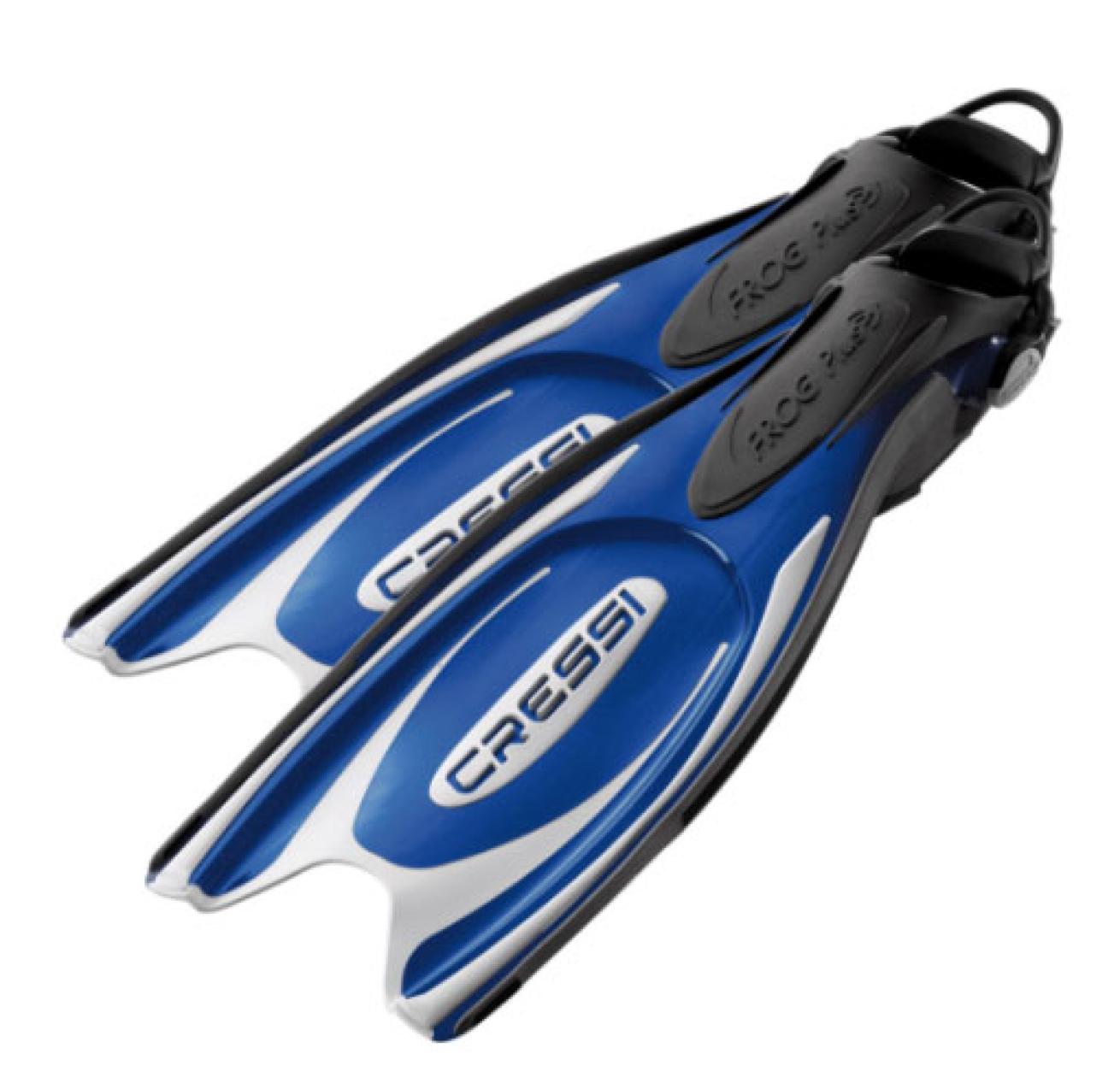
Courtesy CressiMedium-blade fins like Cressi's Frog Plus EBS are good, all-around fins that can handle a lot of conditions; the open-heel design is preferred by divers who like to wear booties.
CHOOSE THE RIGHT SCUBA DIVING FINS By design or by luck, some fins are better-suited for particular kicking styles. Considering the techniques you’re more skilled at or confident with when selecting fins will ensure you have the right tool for the job. Trying to frog kick in an overhead environment with long-blade freediving fins could spell disaster, as could trying to power into a current with short blades that offer little leverage.
For her style of diving, Heinerth looks for a “reasonable-length blade” — not too long — “with good recoil, neutral buoyancy and spring straps to lessen entanglement hazards.
“Many people buy heavy, negatively buoyant fins that weigh their feet downward, worsen streamlining and send thrust to the bottom,” she says. “Divers should bend their knees and point their toes a little so the fins rest parallel to the diver’s back while in horizontal trim. This helps ensure the blades are well away from the bottom or delicate marine life.”
Burnett’s strategy is site-specific. “For warm open ocean with potential of strong current, I go for the full-foot medium-blade fin. If I know I am diving in muck in warm water, then I go for the full-foot short. If I am freediving and swimming after dolphins, then I go for full-foot long fins. And if conditions are cold, then the open-heel short.” And she advises that protecting your feet is key, especially on long, expensive dive trips. “Make sure you have some type of protection, whether it’s Lycra or neoprene socks to a full bootie. Unless your feet are made of leather, chafing is uncomfortable, and when you have broken skin, you can’t kick properly.”
“Freedivers prefer long-bladed fins that return maximum energy per kick,” says Krack. “There are many materials used, from plastic on entry-level fins to fiberglass and carbon fiber on high-end models. Plastic fins are very durable, but carbon fins return the most energy and are the choice for most instructors and serious freedivers.”
He says divers should consider what they will be doing most often with their fins. “Firm fins might be very efficient going up and down the water column, but if you regularly dive at a site with long surface swims, then a softer blade might be more comfortable.” And when shopping for your next pair, consider that footwear will affect size, fit and comfort.



